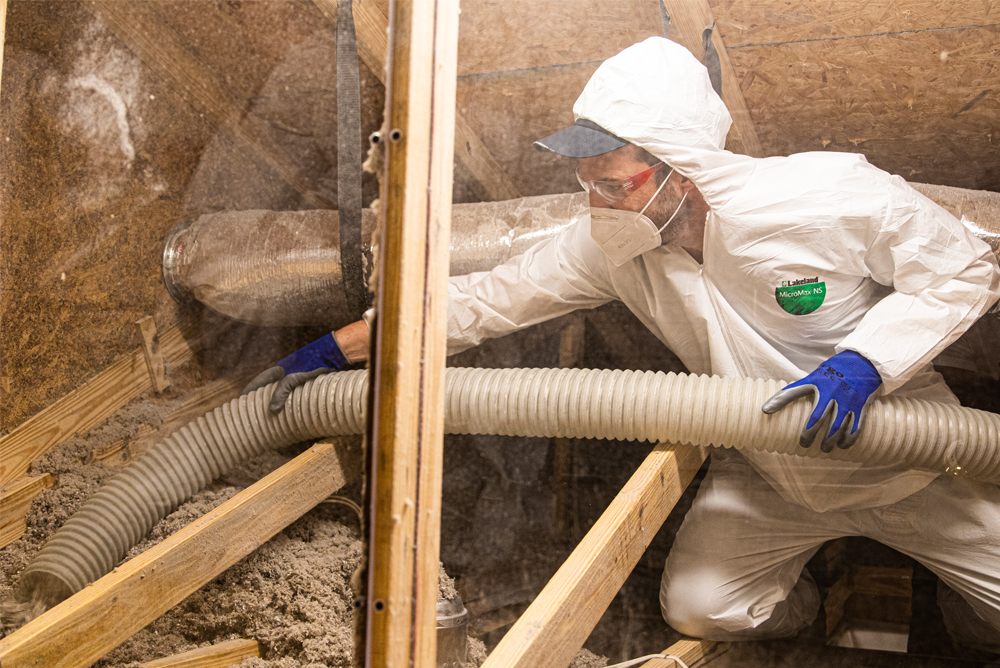
Insulation 101: Cellulose | Koala Insulation
Cellulose is a type of blown-in or loose fill insulation. Today, it’s made from up to 85 percent recycled material, like recycled newspaper. It most often is grey in color; however, when examined closely, you can still see remnants of the materials used, such as bits of paper.
Features
Non Irritating
Insulation often has the stereotype of being itchy when in contact with a person’s skin. However, because of the material used, cellulose is soft to the touch and doesn’t contain materials that irritate unprotected skin. While you should still be cautious and use protective gear like a dust mask, safety goggles and gloves around insulation, coming into contact with this type won’t cause an itchy rash like other types may.
Fire Resistant
Although paper is used in the recycled material of cellulose, this does not increase its liability to catch fire. While fiberglass and mineral wool are naturally non-combustible, cellulose’s fire resistance is enhanced during production with boric acid.
Boric Acid
Boric acid contributes to the benefits of cellulose within a building, enhancing it’s resistance against not only fire, but mold and pests as well. This chemical prevents the organic material from molding due to its antifungal properties. It also kills insects when they ingest the insulation, making it a great pest deterrent. Boric acid isn’t known to be hazardous to people and is actually used in some medications and personal care items, like soaps and detergents. This is also because of the antifungal and antibacterial properties.
Heat Transfer
Insulation slows the rate at which heat transfers through a building enclosure. Having a properly insulated building helps prevent heat from escaping or entering, which can overwork your air conditioner in the summer and your heater in the winter. Preventing this aids in regulating temperature and thus your energy bill.
R-Value
The rate at which insulation slows heat transfer is called Resistance Value, or R-Value. R-Value is a numerical value for the resistance of heat. The higher that number, the better the resistance. Cellulose, in particular, has around R-3.4 per inch of depth, which is one of the highest r-values among blown-in insulation.
Thermal Bridging
Blown in cellulose has the special effect of combating thermal bridging. Thermal bridging is when other objects in your attic, like ceiling joists, are more conductive than the material around it. Heat is more likely to travel through them than be trapped by the insulation. Blown in cellulose covers these objects, preventing heat transfer.
Sound Absorption
Insulation is also a great way to help keep noise from penetrating your walls, roof and floor. When cellulose is densely packed, sound waves, like heat, have a more difficult time getting through the insulation. Because blown-in cellulose can be added quickly and easily, it’s one of the first steps when tackling a noise problem.
Customer Review
Recently, we had a customer that needed her attic reinsulated. The reason we add more insulation in general is to one, increase efficiency and comfort; and two, meet codes and Energy Star recommendations. We saw that she had an R-value of about R-10, when the Energy Star recommended was R38. To increase her R-value, we added in an additional 9 inches, which increased her R-value by about 28. This reduced her energy bill by about 25% and is expected to recoup her cost in under 3 years.
Blown-In Advantage
While our customer needed her attic reinsulated, cellulose can go in various places around a building. It can be used in residential and commercial applications and the most common projects are for ceilings and walls.
The advantages of having blown-in cellulose are available to home owners and businesses alike. Primarily, it’s one of the most cost effective and affordable r-values per inch. While it’s a commonly used retrofit in existing homes, it’s also often used in new construction. Cellulose is also the most environmentally friendly because of its recycled materials.
Koala Insulation of Central Atlanta is focused on providing the best insulation for your building. Evaluating your insulation needs, especially for new homeowners and businesses, is important for keeping your building comfortable and energy efficient. Contact your Koala Insulation of Central Atlanta or call (404) 994-1287 today to see if cellulose can solve your insulation needs.
Ready to book your free insulation evaluation?
We have 3 convienant ways for you to get in touch
We Provide Insulation Services to the Following Central Atlanta Areas
Kirkwood, Candler Park, Druid Hills, Morningside, Decatur, Scottdale, Clarkston, Downtown, Duluth, Norcross, Doraville, Chamblee, Lawrenceville, Lilburn, Tucker
Counties Served
Gwinnett County, Dekalb County, Fulton County
Zip Code
30303, 30305, 30308, 30309, 30313, 30314, 30318, 30324, 30332, 30334, 30361, 30363, 30369, 30021, 30030, 30033, 30079, 30306, 30307, 30317, 30322, 30329, 30345, 30044, 30047, 30084, 30071, 30093, 30096, 30340, 30341
